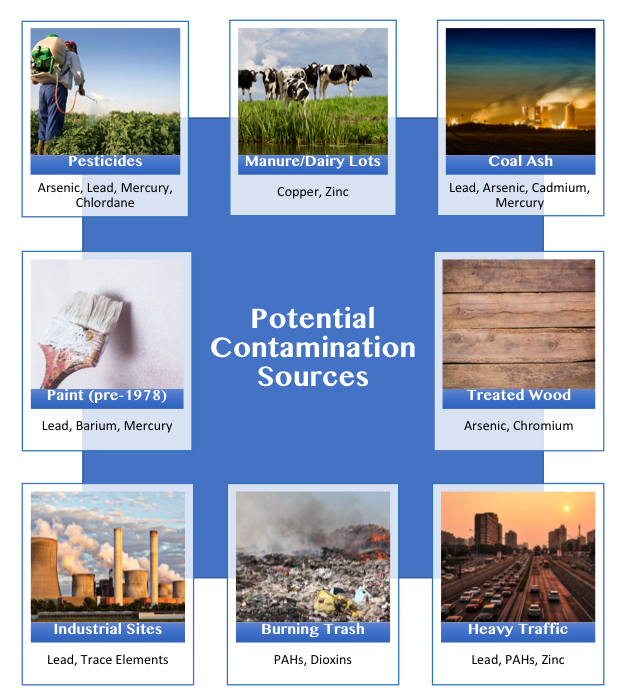Sources of Contamination
Contaminants can be introduced into soil from many different sources both natural and human-made. While many contaminants break down over a short period of time into less harmful substances, some contaminants are more persistent and can remain in the environment for years or even decades.
Soil can become a storage bank for some contaminants. A number of factors, including soil type, organic matter content, soil pH, weather patterns, and the chemical characteristics of the contaminant affect how a contaminant moves through the environment and whether it poses a risk to human health.
Gardeners and children in gardens have higher exposure to these stored contaminants than other populations because they are interacting with the soil and even ingesting some soil particles while working or playing in the garden or when eating produce grown in these soils.
Factors to Keep in Mind
- Naturally-occurring. Some soils and groundwater in North Carolina can be especially high in naturally-occurring arsenic or other heavy metals due to the type of bedrock and soil type of the area.
- Past and current land use. Contaminants can be left behind from historical activities like lead paint or pesticide use. Pollutants can also come from nearby sources like chemical spills or leaks, runoff from neighboring properties, or air emissions from nearby industry or busy roadways. Urban soils often have a higher risk for contamination, especially from lead.
- Garden practices. Gardeners may accidentally introduce contaminants into soils by improperly storing pesticides, using untested municipal compost or other untested soil amendments, or using garden construction materials that are not garden-safe.
- Tracking contaminated soil into the home. Whether from your garden or from loose soil around the foundation of your house, soils containing heavy metals and other toxic chemicals can hitch a ride on shoes and clothing.


